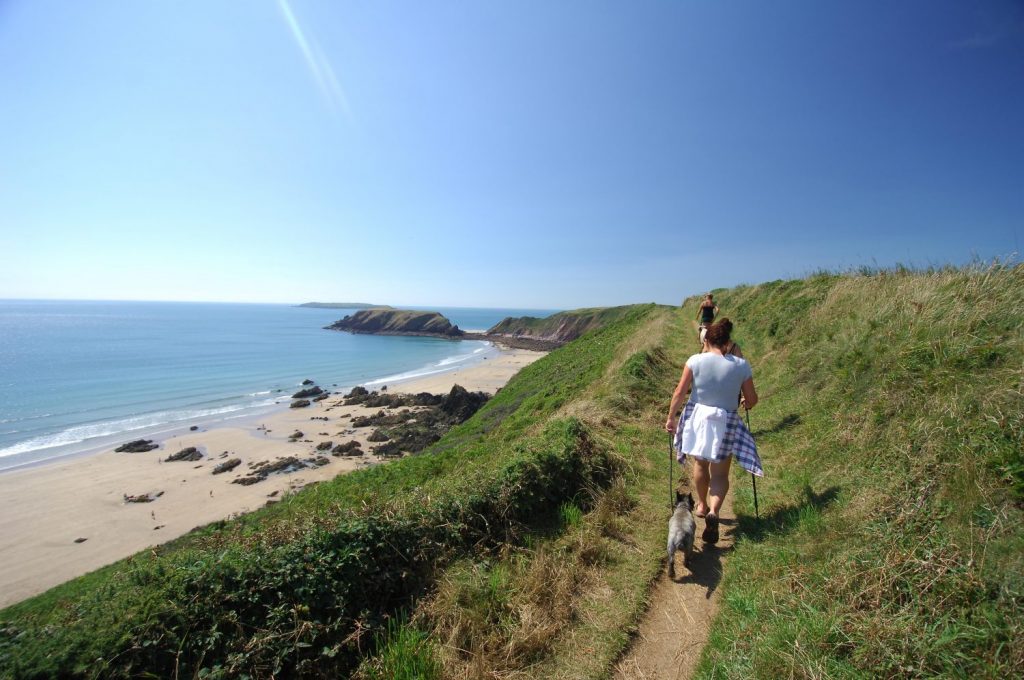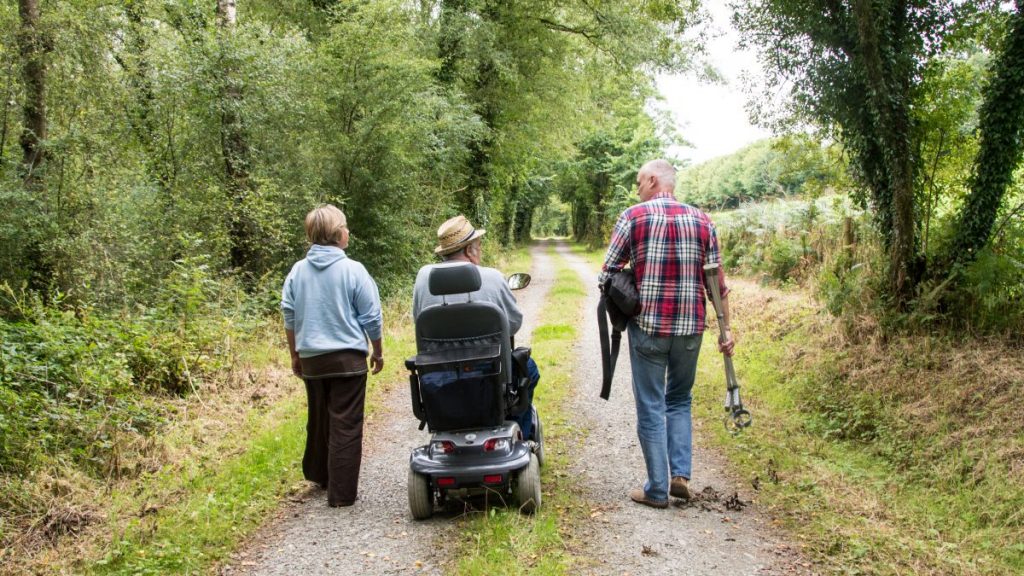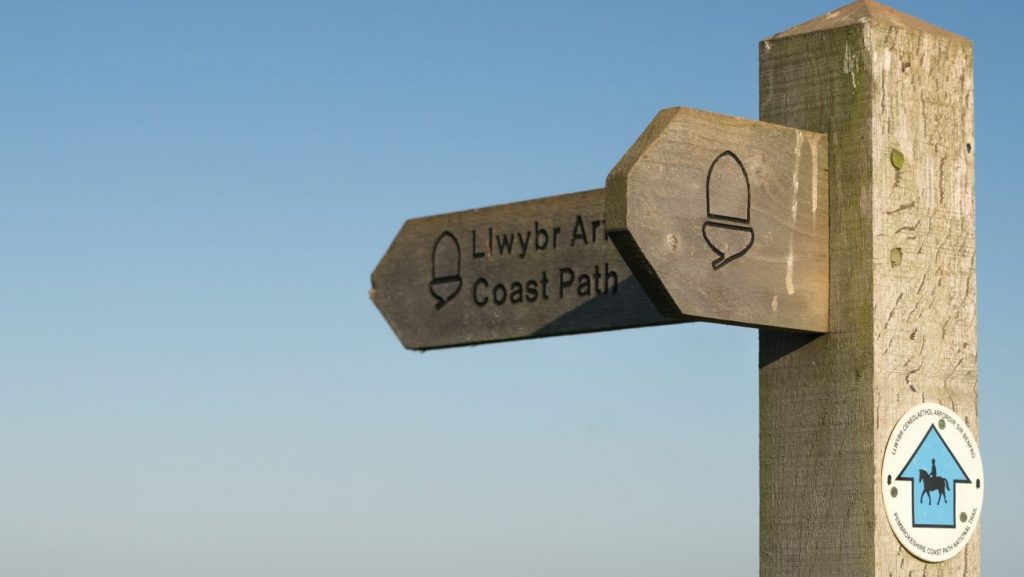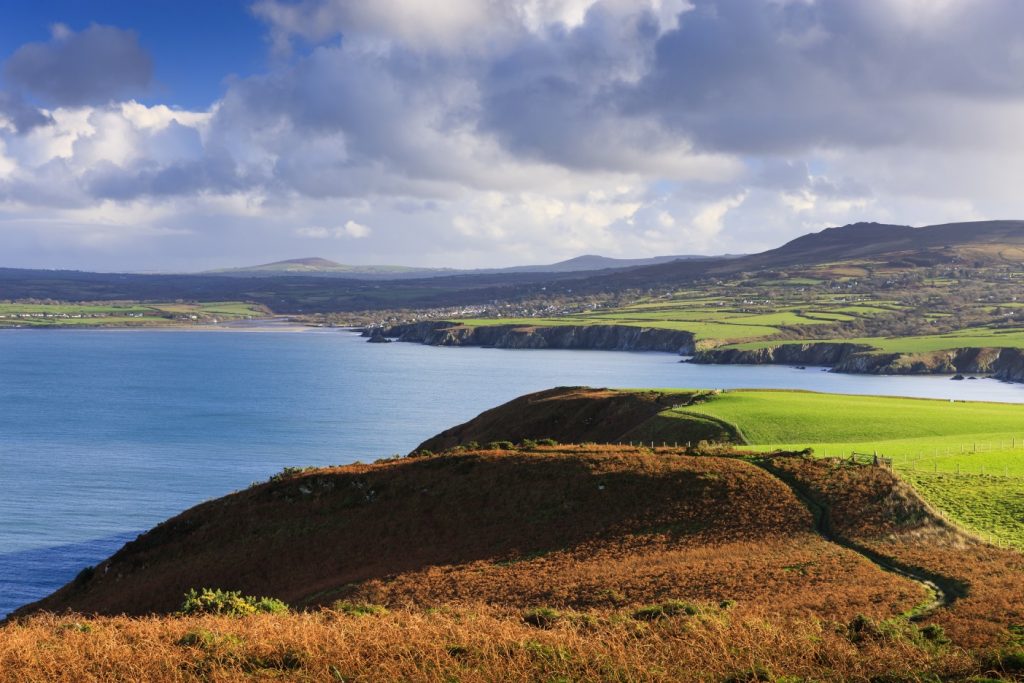DISTANCE/DURATION: 3.8 miles (6.1 km) 2 hours.
PUBLIC TRANSPORT: Service bus St Ishmaels 315/316, *Puffin Shuttle 400 (*seasonal, hail & ride).
CHARACTER: Tidal estuary, coast path, fields and livestock, moderate grading, woods, 1.1 miles (1.75 km) minor road walking.
LOOK OUT FOR: Wooded valley at Monk Haven, castellated wall, woodland birds waders and ducks etc. on estuary.
CAUTION: Check tide tables for estuary and beach walk.
A pair of binoculars is very useful to have with you on this route. It takes you along the banks of the Gann, one of Pembrokeshire’s best birdwatching sites, as well as exploring the countryside and coast to the west of the village of St Ishmaels.
The long shingle ridge known as The Pickleridge and the pools beside it are an unusual habitat for wildlife, fed throughout the year by freshwater streams but also flooded by the sea during higher tides.
The route skirts the huge deposit of sand and gravel which built up at the southern edge of the Irish Sea ice sheet about 17,000 years ago.
The flooded pools that attract ducks and geese are not natural features; they were created when building material was needed for World War II RAF sites on the Dale peninsula and at Talbenny.
Wading birds and wildfowl are also attracted to the rich feeding grounds in the Gann itself and to the little estuary’s saltmarsh. During the summer shelduck, oystercatchers, snipe, redshank and greenshank are often seen and in autumn whimbrel and hundreds of migrant finches and pipits visit the area.
Winter bird highlights include the large group of several hundred curlew that roost on the Gann.
Throughout the year look out for a relative newcomer to the Pembrokeshire coast, the little egret.
The bird looks like a small heron, with long legs and dagger-like bill but with brilliant white plumage.
The route also takes in the little bay of Monk Haven, which gets its name from an early Christian monastery that is thought to have been close by.
The haven used to be a landing point for pilgrims travelling to St Davids.
Haydn Garlick, West Sector Ranger for Pembrokeshire Coast National Park Authority, says: “This is a very good walk at any time of year if you are interested in birds, but especially in spring and autumn when migrants are on the move.”
Find this walk
Grid ref: SM822066
SAFETY FIRST!
- Take great care when on the Coast Path
- Stay on the path and away from cliff edges
- Wear boots and warm, waterproof clothing
- Take extra care in windy and/or wet conditions
- Always supervise children and dogs
- Leave gates and property as you find them



